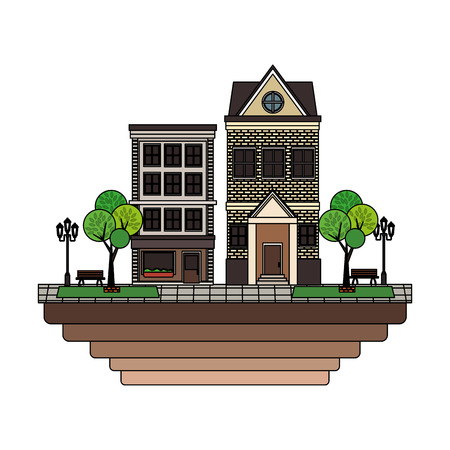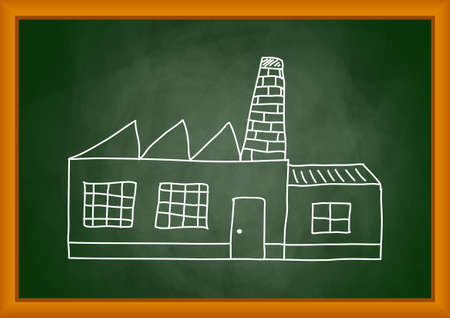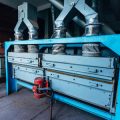Introduction to the Bagua Map
The Bagua Map is a key tool in Feng Shui, an ancient Chinese practice that focuses on harmonizing energy in your environment to promote well-being. The word “Bagua” literally means “eight areas,” and the map divides any space—like your home—into eight distinct sections, each representing a different aspect of life, such as family, wealth, health, and relationships. At the center of the Bagua is the area representing overall balance and wellness.
Feng Shui originated in China thousands of years ago as a way to align buildings and spaces with natural forces for optimal energy flow, known as “Qi.” Over time, Feng Shui principles have traveled around the world and adapted to different cultures, including American households. Today, many Americans use the Bagua Map as a practical guide for arranging their living spaces to encourage harmony among family members and create a more supportive home environment.
In modern American homes, applying the Bagua Map doesn’t require major renovations or unfamiliar rituals. Instead, it’s about making small adjustments in room layout, decoration, and even color choices to enhance positive energy flow. Here’s a simple table showing how the Bagua Map connects with areas of family life that are especially important in American culture:
| Bagua Area | Life Aspect | Typical Home Location | American Family Focus |
|---|---|---|---|
| Family & Health | Relationships with parents, siblings, well-being | Living Room or Dining Room | Family bonding & communication |
| Wealth & Prosperity | Financial stability | Home Office or Back Left Corner | Providing for loved ones |
| Love & Relationships | Marriage, partnerships | Main Bedroom or Back Right Corner | Caring romantic relationships |
| Children & Creativity | Kinds’ growth, creativity | Kid’s Rooms or Middle Right Side | Supporting children’s development |
| Helpful People & Travel | Support from friends & mentors | Front Right Corner or Entryway | Friendship & community connections |
| Career & Life Path | Work satisfaction, purpose | Main Entrance or Front Center Area | Balancing work and home life |
| Knowledge & Wisdom | Lifelong learning, personal growth | Front Left Corner or Study Area | Lifelong learning values |
| Fame & Reputation | Pride, recognition from others | Middle Back Wall of Home or Living Area Wall Displaying Achievements | Acknowledging family achievements |
This approach allows families to use the Bagua Map in a way that fits their lifestyle and traditions while strengthening relationships at home.
2. The Family Area on the Bagua Map
Understanding the Family & Ancestors Section
On the Bagua Map, which is a key tool in Feng Shui, there’s a specific area devoted to family and ancestors. In traditional Feng Shui, this section is called “Zhen” and is usually found on the left side of the Bagua when you are standing at your front door looking into your home. This zone is not only about blood relatives but also about the energy of support, growth, and strong foundations in your life.
Symbolism of the Family Area
The family section represents unity, stability, and strength within households. Symbolically, it’s connected to the wood element, which signifies growth, harmony, and resilience—much like a tree with deep roots and spreading branches. This area is tied to our sense of belonging and how we interact with both close family members and extended relatives or chosen family.
| Bagua Area | Element | Symbolism | Practical Meaning |
|---|---|---|---|
| Family & Ancestors (Zhen) | Wood | Growth, Stability, Support | Healthy relationships with family; strong foundations; emotional support network |
Why This Matters for American Households
In American culture, where many families are blended or may live far apart, creating a space that honors and strengthens these bonds can be incredibly valuable. Whether it’s displaying cherished family photos, heirlooms, or even artwork that reminds you of your roots, focusing on this area can help nurture closer connections. It encourages communication, trust, and shared memories—key ingredients for happy family life.
How to Find and Enhance Your Family Area
You can locate the family zone by overlaying the Bagua Map on your home’s floor plan, aligning the bottom edge of the map with your front door wall. The family area will be on the middle left side. Enhancing this spot could be as simple as adding green plants (to boost wood energy), placing meaningful mementos, or using colors like green and blue that represent growth and calmness. If you have a dining room or living room in this location, it’s a great place to encourage family gatherings and conversations.
Quick Tips for Activating the Family Area
- Add healthy houseplants to symbolize vitality and growth.
- Display recent or historic family photos in wooden frames.
- Use decor in shades of green or blue for a peaceful atmosphere.
- Avoid clutter to keep energy flowing smoothly.
- Repair any broken items here to prevent relationship “breakdowns.”

3. Applying the Bagua Map in an American Household
Understanding the Bagua Map Basics
The Bagua Map is a traditional Feng Shui tool used to analyze the energy flow within a home. It divides your living space into nine sections, each representing different aspects of life. The “Family” area is one of these sections and is believed to influence harmony and support among family members.
Step-by-Step: Locating the Family Area in Your Home
- Print or Draw the Bagua Map: Start by finding a simple 3×3 grid Bagua Map online or draw one yourself. Label the middle left square as “Family.”
- Choose Your Reference Point: In most American homes, use the main entrance door as your reference point. Stand at your front door, facing inside.
- Overlay the Map: Imagine laying the Bagua Map over your entire first floor with the bottom edge aligned with your front wall. The “Family” area will be on the left side, one-third from the front entrance.
| Bagua Area | Location from Front Door | Typical Home Space Example |
|---|---|---|
| Family (Zhen) | Left side, middle section of home | Dining Room, Living Room, or Hallway |
| Career | Center front of home | Main Entry or Foyer |
| Wealth | Back left corner of home | Bedroom or Office |
Activating the Family Area: Simple Tips for American Homes
- Tidy Up: Clear clutter from this space to encourage positive energy flow. A clean family area creates a welcoming atmosphere for everyone.
- Add Family Photos: Display recent family pictures or cherished memories here to strengthen bonds and invite togetherness.
- Incorporate Wood Elements: Place wooden furniture, green plants, or artwork featuring trees in this zone. The wood element supports growth and connection in relationships.
- Select Calming Colors: Use shades of green, blue, or earthy tones for décor—these colors are soothing and nurture harmony.
- Create Gathering Spaces: Arrange comfortable seating where family members can spend time together, such as a cozy sofa or dining table.
Quick Activation Checklist for American Households:
| Action Step | Description/Example |
|---|---|
| Tidy and declutter | Remove unused items from living room shelves or hallways in the Family area. |
| Add family photos/artwork | Create a gallery wall with family portraits or vacation snapshots. |
| Add wood elements/plants | Place a potted plant or wooden bookshelf near windows. |
| Select harmonious colors | Add green throw pillows or blue curtains for accent. |
| Create gathering spot | Add extra chairs around a coffee table for board games or conversations. |
Tip:
If your Family area falls in a less-used space like a hallway, simply hang meaningful art or add a small bench with cushions to make it more inviting.
4. Practical Tips for Enhancing Family Relationships
Color Schemes to Foster Harmony
Colors play a big role in Feng Shui and can easily be incorporated into any American home. For the “Family” area on the Bagua Map (traditionally the east section), use greens and blues, which represent growth, healing, and calmness. These colors are also popular in American interior design, making them easy to blend with your current décor.
| Bagua Area | Recommended Colors | Suggested Rooms |
|---|---|---|
| Family (East) | Green, Blue | Living Room, Dining Room |
| Relationship (Southwest) | Pink, Red, Earth Tones | Master Bedroom |
| Children & Creativity (West) | White, Pastels | Kids’ Rooms, Playrooms |
Décor Choices for Togetherness
Select décor that encourages connection and represents unity. Family photos in wooden frames work well in the Family area and help create a sense of belonging. Consider adding plants to symbolize life and growth—snake plants or pothos are both low-maintenance and commonly found in American households.
- Photo Wall: Display family pictures in a gallery style to celebrate shared memories.
- Shared Artwork: Hang art created together by family members to inspire collaboration.
- Cozy Textiles: Use soft rugs or throw blankets in communal spaces for comfort and warmth.
Organization Strategies that Support Positive Energy
A clutter-free space is essential for good energy flow and healthy relationships. In busy American homes, simple organization solutions go a long way.
- Shoe Rack at Entry: Keeps entryways neat and signals a welcoming home environment.
- Baskets or Storage Bins: Place these in family areas for quick cleanup of toys, games, or electronics.
- Central Charging Station: Designate a spot for everyone’s devices to encourage unplugged family time.
- Weekly Decluttering Routine: Set aside 10 minutes each week as a family to tidy up shared spaces together.
Blending Feng Shui with American Family Life
You don’t have to make drastic changes to see improvement. Start small: add some green pillows to your living room, place a plant on your dining table, or hang up new family photos. With these practical tips based on the Bagua Map and tailored to American lifestyles, you can create a more harmonious environment where every family member feels supported and connected.
5. Success Stories and Cultural Adaptations
Applying the Bagua Map in American households has led to many heartwarming changes in family life. Here are some real-life stories from American families who have used the Bagua Map, along with ways theyve adapted it to fit their unique culture and lifestyle.
Bringing the Family Together: The Smiths’ Story
The Smith family from Ohio wanted to improve their family communication. After learning about the Bagua Map, they focused on the “Family & Health” area of their home. By placing a round table with fresh flowers and family photos there, they noticed more frequent and meaningful conversations during meals. This simple change encouraged everyone to spend more time together and share daily experiences.
Balancing Work and Home Life: The Johnsons’ Experience
The Johnsons, a busy Los Angeles family, found that work schedules were affecting their home harmony. They decided to use the Bagua Map’s “Career” section near their entryway by adding calming blue decor and organizing shoes and bags neatly. This adaptation helped create a welcoming feeling at the door, making it easier for everyone to transition from work mode to family time.
How American Families Adapted the Bagua Map
| Challenge | Bagua Area Used | Adaptation | Result |
|---|---|---|---|
| Lack of quality family time | Family & Health | Added a shared activity space (game table) | More fun and bonding moments |
| Stressful home atmosphere | Harmony/Relationship Corner | Placed soothing artwork and soft lighting | Calmer mood at home |
| Trouble with open communication | KAN (Career/Life Path) | Created a message board at the entrance | Easier sharing of schedules and feelings |
Cultural Considerations for American Households
Many families personalize Feng Shui principles by mixing in familiar American traditions, such as using favorite sports memorabilia or holiday decorations in key Bagua areas. Some choose practical items like comfortable seating, playful rugs, or even a coffee station in social spaces to encourage gathering and conversation. These adaptations help make Feng Shui feel natural while supporting stronger family relationships.


